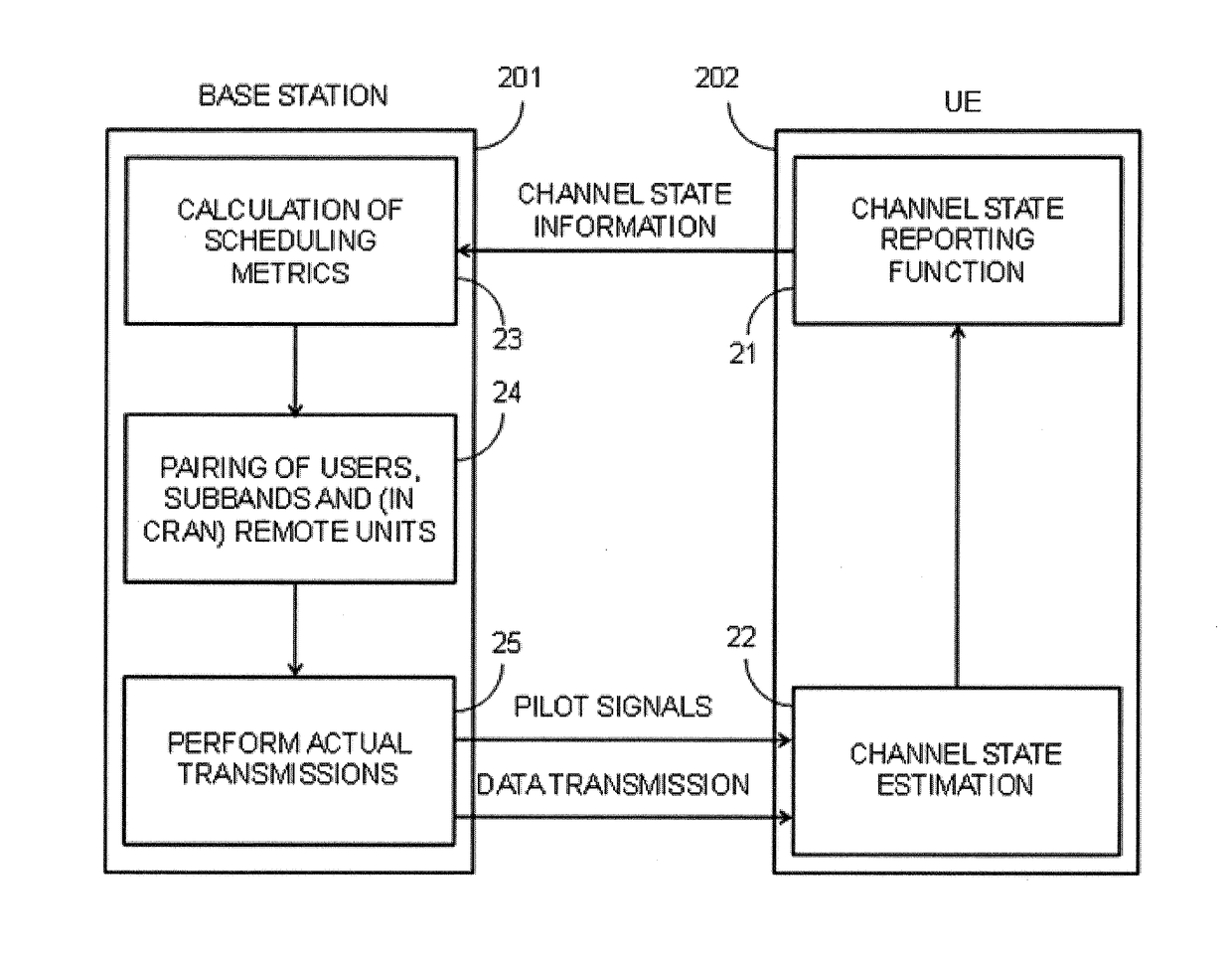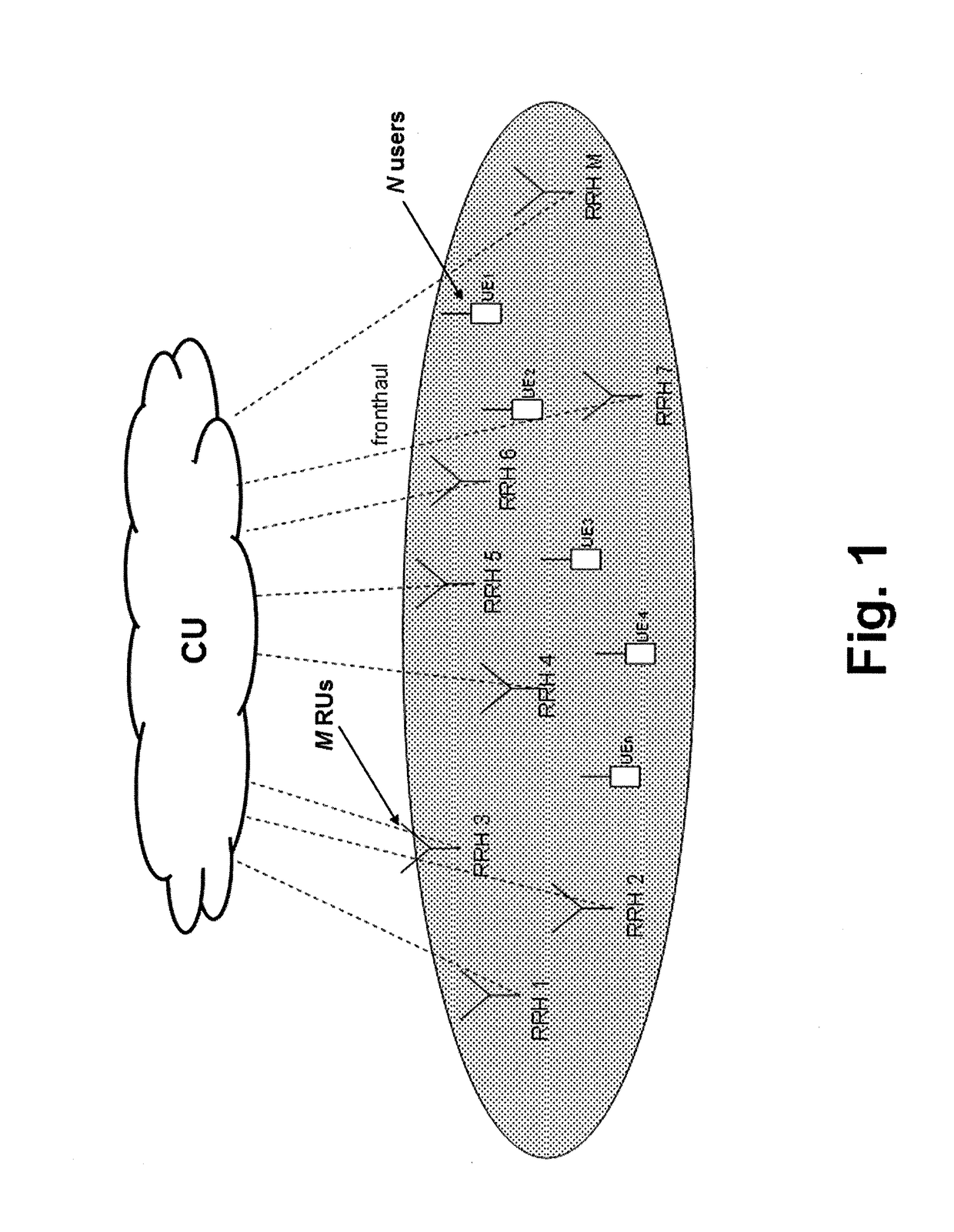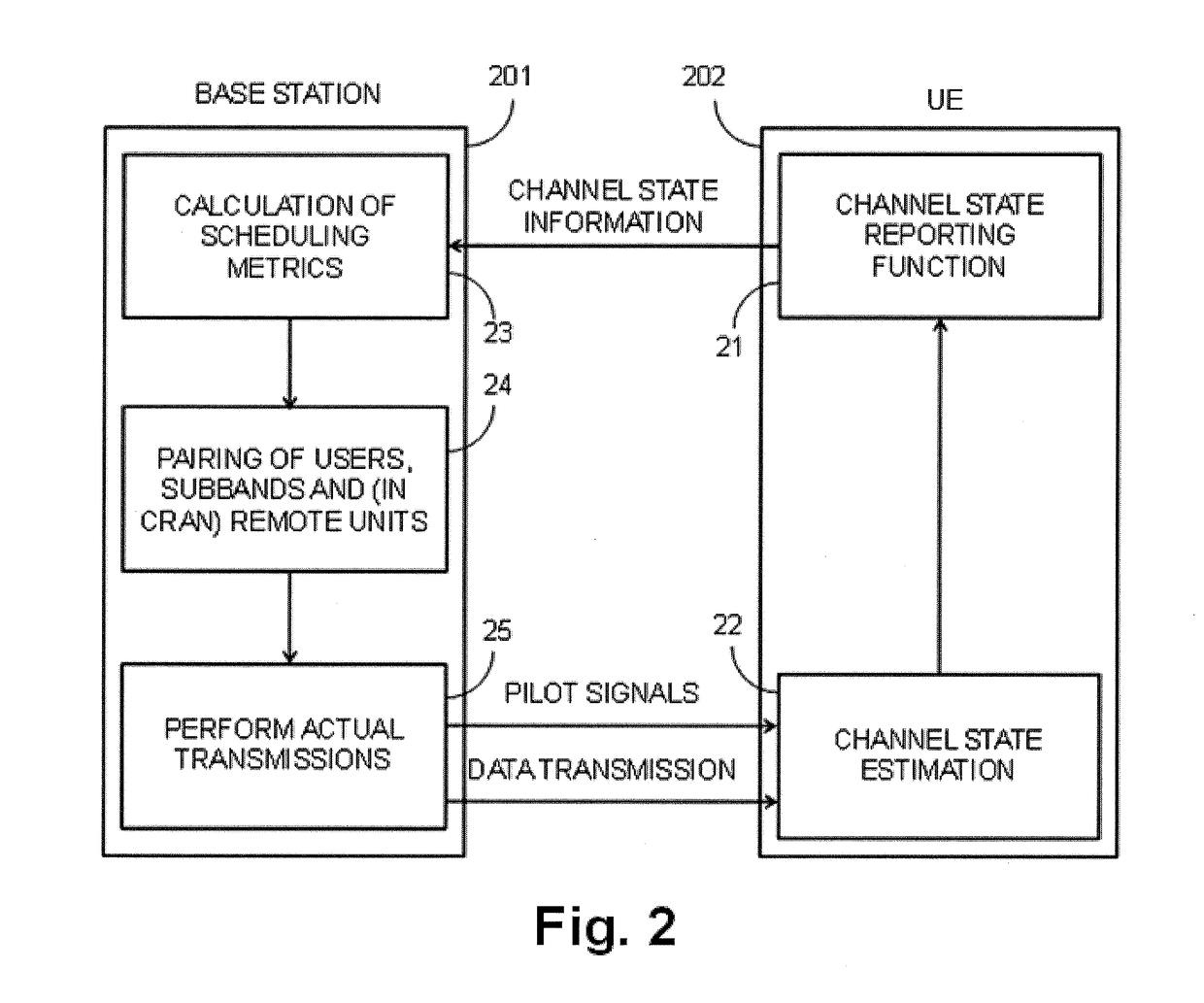Method to perform joint scheduling in the downlink or in the uplink of a centralized OFDM radio access network for a plurality of users considering time, frequency and space domains, scheduler device thereof and computer program products
a radio access network and centralized technology, applied in the field of wireless packet scheduling, can solve the problems of inconvenient assignment of different cell identifiers to each cell, user relying on handovers under mobility conditions, and lack of flexibility in assigning resources to different sites
- Summary
- Abstract
- Description
- Claims
- Application Information
AI Technical Summary
Benefits of technology
Problems solved by technology
Method used
Image
Examples
Embodiment Construction
[0013]It is accordingly an object of the present invention to provide a scheduling technique (sub-optimal) to be applied in centralized radio access networks (CRAN) based on OFDM, whereby a set of remote radio heads of a set of remote units are connected to a central processing unit, or central unit, that performs all (or part of) the radio-related processing tasks. The proposed technique is not optimal (as an optimal solution to this problem would be NP-hard, i.e. non-computable in polynomic time), and a sub-optimal approach is provided based on the proposal disclosed in EP-A1-2676514, of the same inventors of this invention, by extending said proposal to a centralized scenario and further applying specific radio resource management techniques for increased capacity.
[0014]According to the invention, the term remote unit or RU, as will be termed from now on, will denote each of the sites with one or more antennas connected to the central unit or CU as will be also termed from now on...
PUM
 Login to View More
Login to View More Abstract
Description
Claims
Application Information
 Login to View More
Login to View More - R&D
- Intellectual Property
- Life Sciences
- Materials
- Tech Scout
- Unparalleled Data Quality
- Higher Quality Content
- 60% Fewer Hallucinations
Browse by: Latest US Patents, China's latest patents, Technical Efficacy Thesaurus, Application Domain, Technology Topic, Popular Technical Reports.
© 2025 PatSnap. All rights reserved.Legal|Privacy policy|Modern Slavery Act Transparency Statement|Sitemap|About US| Contact US: help@patsnap.com



